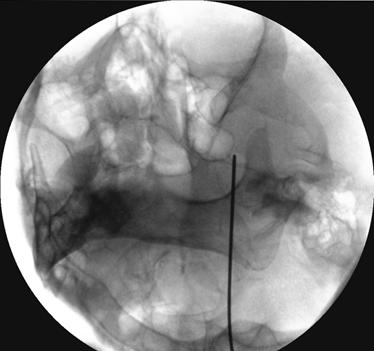In January 2022, the Pain Clinic of Beijing Chaoyang Hospital (hereinafter referred to as Chaoyang Hospital), affiliated to Capital Medical University, received an elderly person with herpes zoster that violated the trigeminal nerve. The patient is an 86-year-old elderly woman who is usually healthy in addition to high blood pressure. However, the excessive electrical sample pain caused by herpes this time makes her unbearable, since the onset of more than 20 days, she has been diagnosed in a number of hospitals, oral a variety of painkillers, but the pain is still serious, almost all night can not sleep, often screaming in pain, family members after many inquiries with the elderly to the pain clinic for help. Director Wang Yun of the Department of Pain conducted a series of consultations and physical examinations on her, and determined that this was severe neuralgia caused by herpes zoster invading the trigeminal nerve, which was unbearable for ordinary people and seriously affected the quality of life, and decided to admit the elderly to hospitalization as soon as possible, and formulated a treatment plan for percutaneous puncture transluminal foramen trigeminal nerve half-moon ganglion radiofrequency. After the elderly were admitted to the hospital, the preoperative examination was perfected, and after the contraindications to surgery were ruled out, Director Wang Yun and Dr. Rong Rong did percutaneous puncture transluminal foramen transluminal trigeminal radiofrequency for her. On the first day after the operation, the grandmother's pain was reduced by more than 90%, and she was very satisfied with the effect of the operation and was happily discharged from the hospital; the family also expressed great satisfaction and sent a thank-you letter.
Head-facial shingles is a zoster virus that invades the trigeminal nerve hemisphere, often causing unbearable neuralgia, and is a severe chronic pain disorder characterized by recurrent, sudden, acute epileptic-like pain in one or more distributions of the trigeminal nerve, and a slight touch can trigger a sudden onset of pain. Trigeminal hemi-moon node, the largest cranial ganglion, is located in the trigeminal nerve pressure at the tip of the temporal bone rock of the fossa, surrounded by important vascular nerves, 3 major branches composed of ophthalmic nerves, maxillary nerves and mandibular nerves, respectively, through the supraorbital fissure, foramen and foramen oval.
Percutaneous puncture to locate the half-moon node through the foramen of the oval and radiofrefrequency therapy is the most effective treatment for relieving this type of pain, especially in patients with poor drug therapy and adverse reactions such as liver damage after medication. For example, the grandmother mentioned above is severe trigeminal neuralgia caused by shingles that affects the entire face. The "Trigeminal Menis segment radiofrequency technology" of the Department of Anesthesiology is to locate the oval foramen under the dual guidance of ultrasound + C-arm (Figure 1), puncture the radiofrequency needle into the foramen of the oval, use functional sensory tests to locate the branches of the trigeminal ganglion, and then perform radiofrequency treatment on the nerves under general anesthesia (Figure 2), which has the characteristics of low risk, high safety factor, and high patient comfort; dozens of such patients have been cured, and have been recognized by patients and their families.

Figure 1: C-arm positioning the ovary foramen
Figure 2: Patient undergoing pulsed radiofrequency therapy under general anesthesia
Department of Anesthesia and Pain Wang Xiaojie Shi Rong Wang Yun